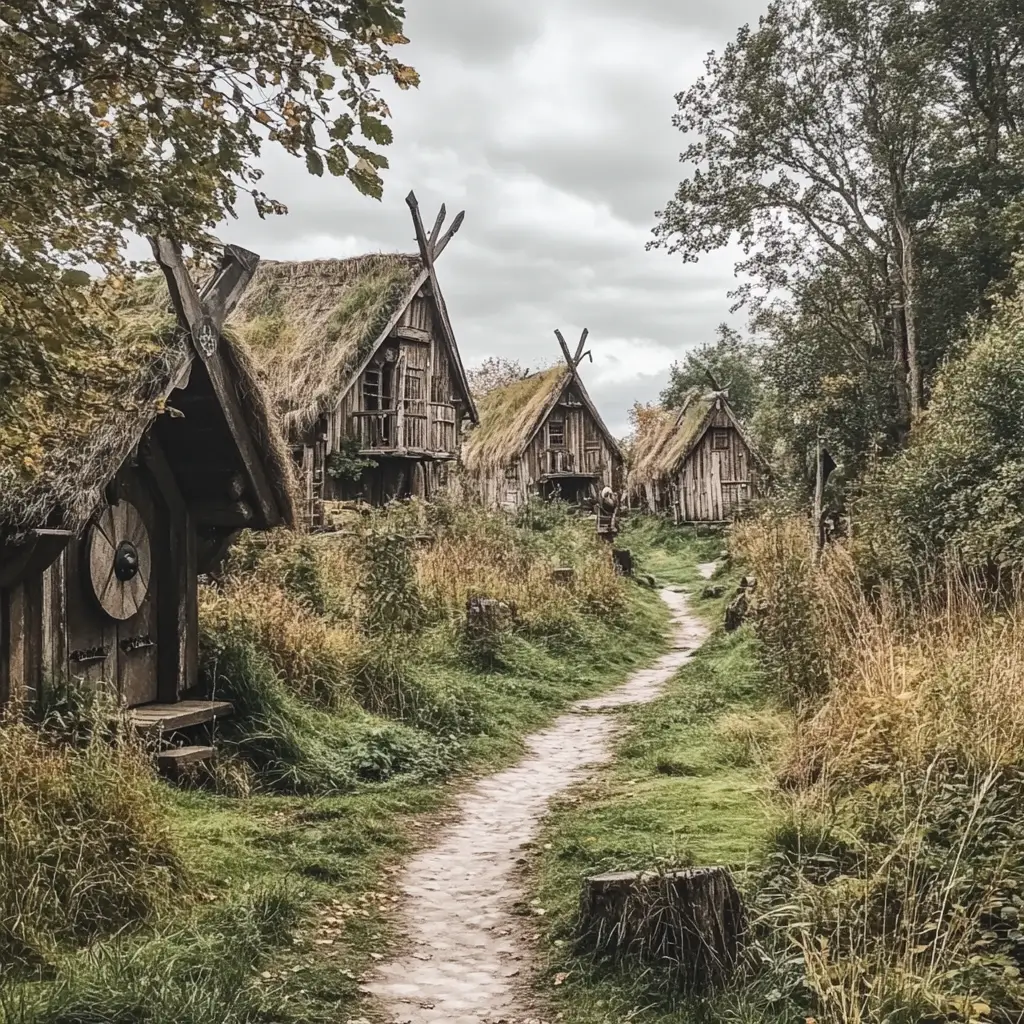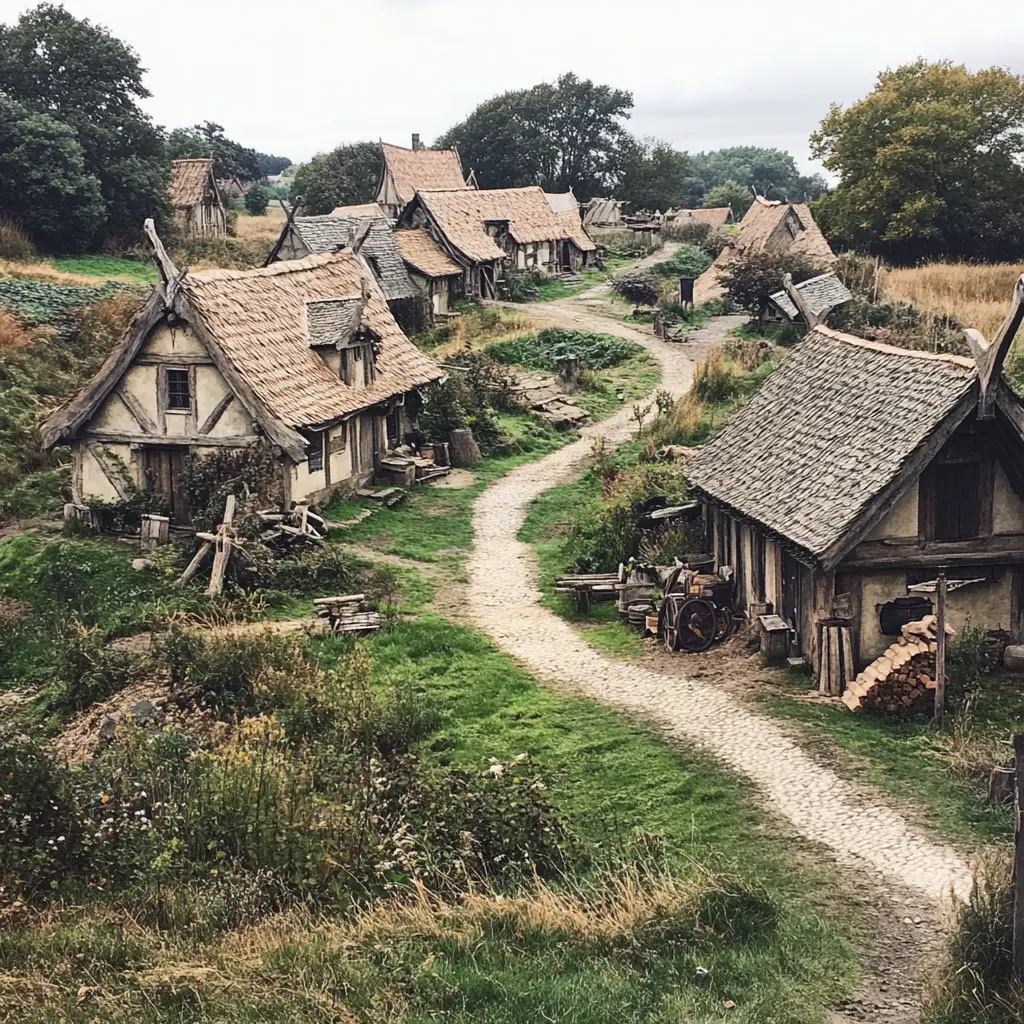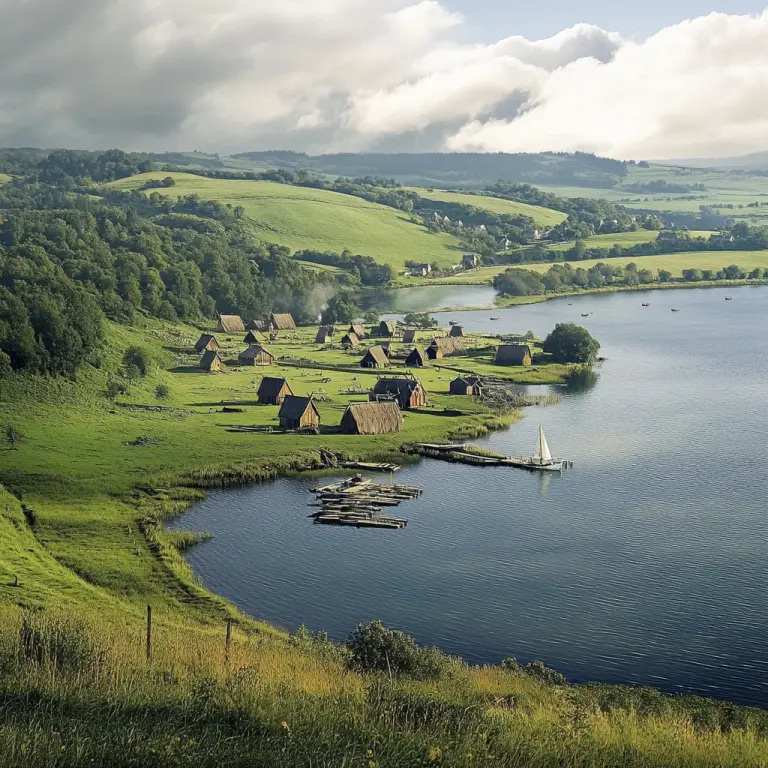Hedeby (also known as Haithabu) was one of the most important Viking Age trading settlements in Scandinavia. Located in present-day Germany near the town of Schleswig, Hedeby played a crucial role as a commercial and cultural hub from the 8th to the 11th centuries. It is considered one of the largest and most significant Viking towns, both for its role in trade and its archaeological discoveries.
Viking Trading Centre: Hedeby was a major international trading port, connecting Scandinavia with Central Europe, the British Isles, and the Mediterranean. It was an essential node in the Viking trading network, handling goods such as furs, leather, textiles, amber, and iron, as well as luxury items like glassware and wine.
Strategic Location: Situated at the narrowest part of the Jutland Peninsula, Hedeby had easy access to both land and sea trade routes. It was positioned on the shore of a natural harbour, which made it a vital maritime and commercial centre. The settlement was also close to the land route leading into southern Germany.
Viking Settlement and Fortifications: Hedeby was fortified with large wooden walls, and the settlement included homes, workshops, a marketplace, and a harbour. The buildings were made primarily of wood and thatch, typical of Viking architecture. The settlement was carefully laid out with specific areas for trading, living, and crafting.
Cultural and Linguistic Importance: As a meeting point for traders from many regions, Hedeby was a melting pot of different cultures and languages. The Vikings who lived and worked there interacted with people from across Europe, including Slavs, Franks, and Anglo-Saxons. The site reflects the extensive cultural exchange during the Viking Age.
Decline and Abandonment: The settlement began to decline in the 11th century, likely due to a combination of economic changes, political shifts, and the expansion of new trade routes. Hedeby was eventually abandoned, and the area was overtaken by the rising town of Schleswig.
Archaeological Significance: Excavations at Hedeby have uncovered a wealth of Viking-era artifacts, including tools, weapons, pottery, and coins. One of the most important finds was the discovery of a large Viking ship, as well as evidence of various crafts, such as weaving and metalworking. The site’s remains offer valuable insights into Viking daily life, commerce, and industry.
UNESCO World Heritage Site: In recognition of its historical importance, Hedeby (Haithabu) was designated a UNESCO World Heritage Site in 2018. The museum at the site displays many of the artifacts discovered during the excavations and offers visitors a chance to learn about Viking trade, culture, and society.
Hedeby Today
Modern-day Hedeby is home to the Haithabu Viking Museum, where visitors can explore the history of the settlement and see replicas of Viking houses, boats, and tools. The museum also showcases a vast collection of artifacts, many of which were unearthed at the site. The surrounding area is rich in archaeological sites, and the museum regularly hosts events, workshops, and demonstrations related to Viking history.
Hedeby remains one of the most significant Viking settlements to be studied, and its rich history continues to provide valuable insight into Viking culture and trade during the Age of the Vikings.



